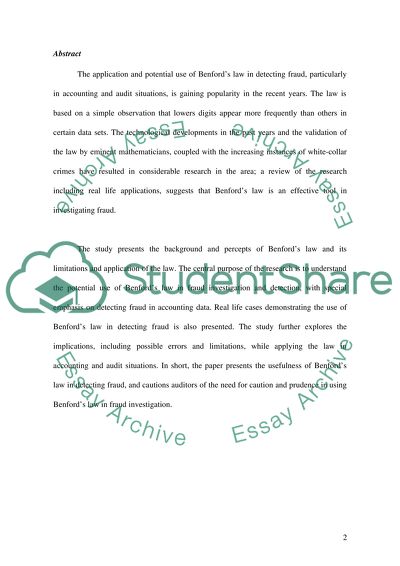Cite this document
(“Use Of Benford's Law In Fraud Investigation Essay”, n.d.)
Use Of Benford's Law In Fraud Investigation Essay. Retrieved from https://studentshare.org/law/1535167-use-of-benfords-law-in-fraud-investigation
Use Of Benford's Law In Fraud Investigation Essay. Retrieved from https://studentshare.org/law/1535167-use-of-benfords-law-in-fraud-investigation
(Use Of Benford'S Law In Fraud Investigation Essay)
Use Of Benford'S Law In Fraud Investigation Essay. https://studentshare.org/law/1535167-use-of-benfords-law-in-fraud-investigation.
Use Of Benford'S Law In Fraud Investigation Essay. https://studentshare.org/law/1535167-use-of-benfords-law-in-fraud-investigation.
“Use Of Benford'S Law In Fraud Investigation Essay”, n.d. https://studentshare.org/law/1535167-use-of-benfords-law-in-fraud-investigation.


